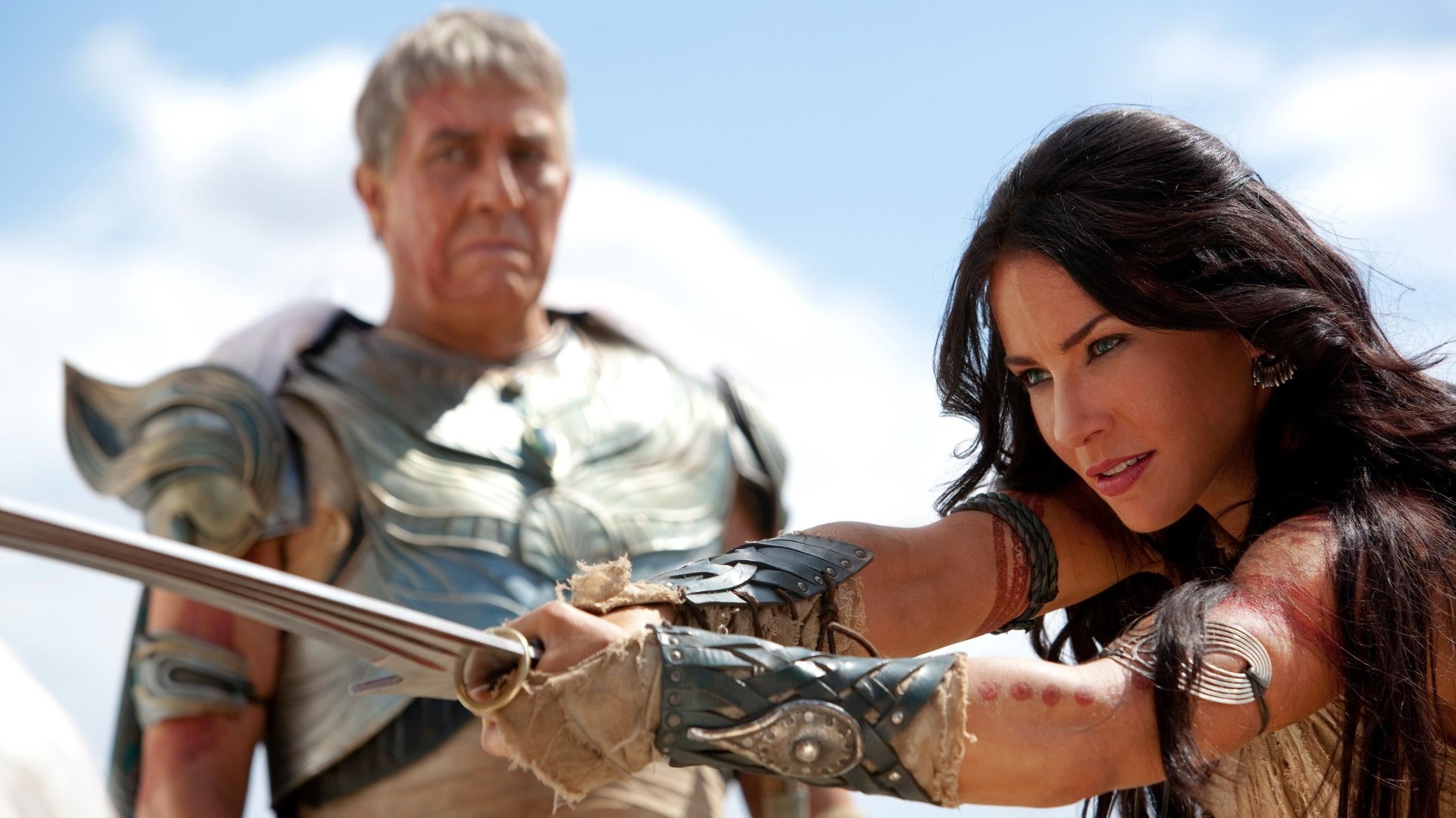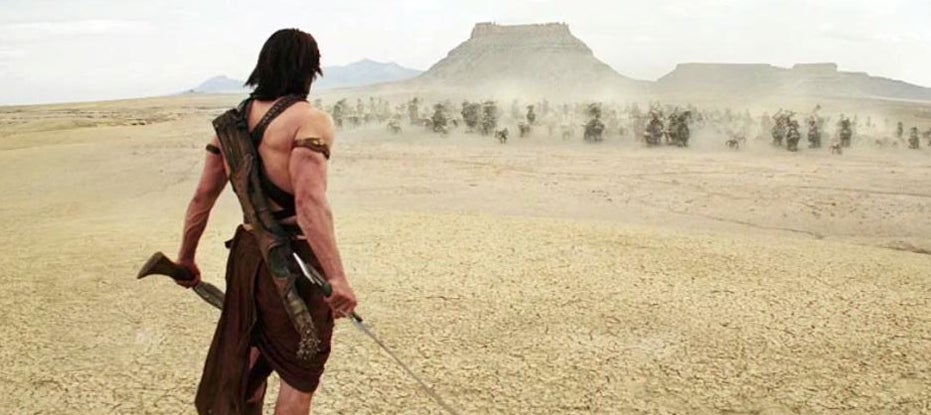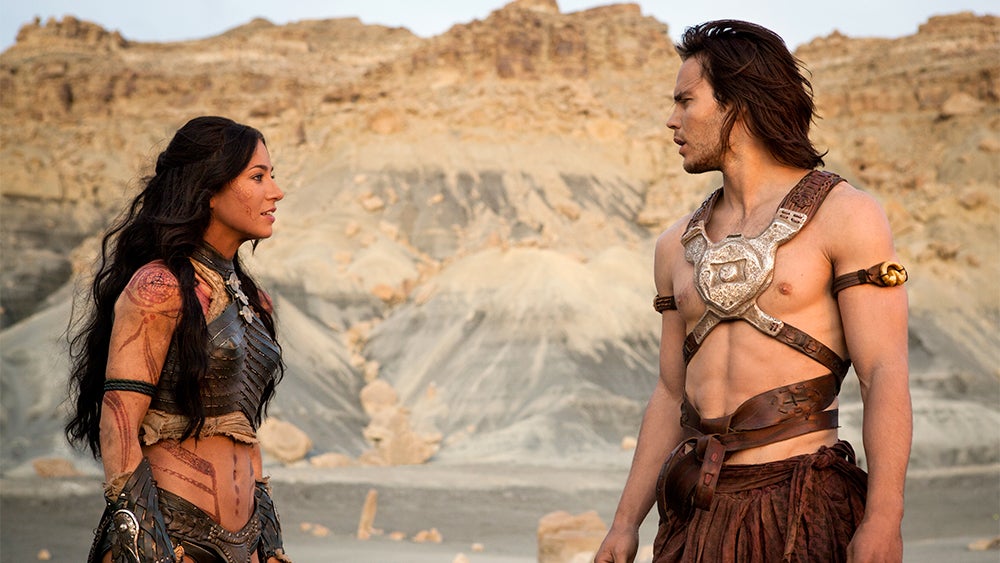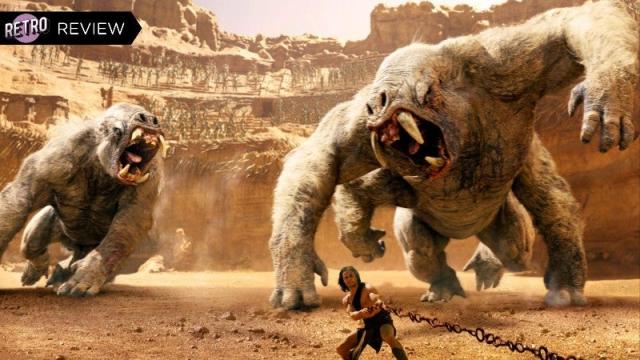Since day one, Disney’s John Carter had all the promise in the world. It’s the live-action debut of Andrew Stanton, who directed the masterful Wall-E and Finding Nemo at Pixar. The source material by Edgar Rice Burroughs is steeped in original sci-fi fantasy and mythology that has permeated history beyond the page. Lead actor Taylor Kitsch was coming off a star-making performance on Friday Night Lights, the supporting cast (Willem Dafoe, Samantha Morton, Mark Strong, Ciarán Hinds, Dominic West, James Purefoy, and Lynn Collins) is incredible, and the Walt Disney company spared no expense in terms of scale visual effects. Everyone was all in on John Carter, and rightfully so.
Of course, we all know what happened next. After opening on March 9, 2012, the reported $US250 ($347) million film bombed at the box office, grossing just $US73 ($101) million in the U.S and $US284 ($394) million globally, relegating the franchise starter not just to one-and-done status, but forever labelling it a failure in every sense of the word. At the time of release, I remember not hating the movie, but not particularly liking it either, and in the decade since release I’ve always wondered if John Carter had cult potential. Could it be a movie we rewatch years later and appreciate in entirely new ways?

That was the mindset I sat down with to watch John Carter on the occasion of its 10th anniversary — and I’m disappointed to say, the answer is “No.” Ten years hasn’t changed John Carter at all. It’s still not an awful movie. There are a few really excellent things in there. But it’s mostly just drawn out, uninteresting, and boring, in large part to the whole thing feeling so derivative.
Which is odd. Because A Princess of Mars by Edgar Rice Burroughs, the book the film is based on, was released in 1912. That’s decades before Star Wars, Dune, Flash Gordon, so many now-staples of science fiction, all of which (and many others) were clearly inspired by Burroughs’ work. Unfortunately, his imagination was seemingly too advanced. By the time technology allowed Hollywood to bring A Princess of Mars to life a full century after its debut, it no longer was the innovator. It was the follower. By 2012, when we sat down to watch a John Carter movie, we’d seen the story done so many times in so many different ways, it felt stale and all too familiar. Any wonder or excitement needed to make the film stand out had been lost to time.

In case you, like me, forgot what John Carter was about in the decade since its release, here’s the refresher. John Carter (Kitsch) is a Southern Civil War vet struggling with life after the war who is looking for a mysterious cave of gold. He finds it, but inside also finds an ancient being that mistakenly transports him to Mars. On Mars, which we find out is actually called Barsoom, there’s a war brewing between rival clans, and only the evil leader (West) marrying Dejah Thoris (Collins), the princess daughter of his rival (Hinds), will stop it. Then John arrives, and because he’s from Earth his body chemistry gives him superheroic abilities. He uses those to defeat the bad guys, unite the planet and marry the princess.
Now, the story is much, much more complex than that. There’s a race of green aliens called Tharks who have huge tusks and four arms that play a huge role, and a mystery bookending device that works exceedingly well, but that’s the basic gist. A white man is plucked out of obscurity to save a foreign world. Just like Luke Skywalker, Harry Potter, Flash Gordon, the list goes on and on. Which doesn’t make it a bad thing, but it’s the main thing, and everything in John Carter around that is a little too dense and complex. There are characters who shapeshift, eons of political baggage, infighting, betrayals, multiple scenes describing new cultural customs, all of which make what’s a simple story at heart feel muddled and drawn out. We just want to watch John Carter jump around and save the world, not scene after scene of characters talking political ambitions.

Once you cut through all of those weeds, though, there is some really great stuff in there, like seeing a human being jumping around like a 25-cent bouncy ball and taking on large armies by himself. The costume and especially set and vehicle designs are also incredible. The loyal pet, Woola, who has super speed, is adorable and memorable. And, again, the bookend plot device that features Spy Kids’ Daryl Sabara actually playing the author Burroughs is surprising and satisfying. But it’s too little too late.
More than not John Carter is just a slog. A series of set pieces mixed with oceans of exposition between warring factions that are barely distinguishable. One or two characters, mainly the Tharks played in motion capture by Dafoe and Morton, stand out, but the rest are cookie-cutter archetypes. All of which was true in 2012 and is true now in 2022.
John Carter works, but it doesn’t work well, and I’m bummed that 10 years hasn’t changed anything about it. I’ve always wanted to like it. Always hoped to find something new to latch onto. But this viewing made me realise that I doubt even 50 years will change how it feels.
John Carter is currently streaming on Disney+
